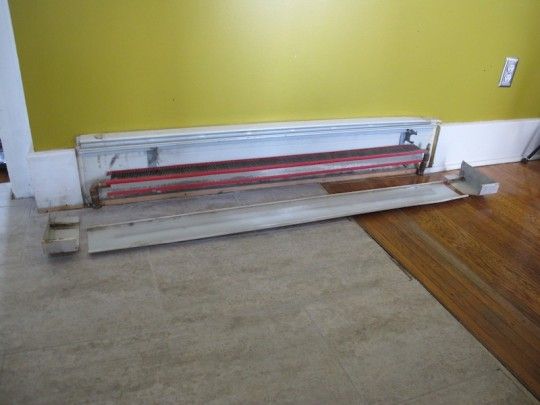Floor Radiator Heat

Learn how to warm up those cold tiles with a radiant heat floor system.
Floor radiator heat. Denison olmsted of new haven connecticut appears to have been the earliest person to use the term radiator to mean a heating appliance in an 1834 patent for a stove with a heat exchanger which then radiated heat. With radiant floor heating you re able to enjoy your whole room without radiators on the walls even the most modern radiators take up room on a wall so imagine the design freedom you have with heated floors you can decorate the walls as you wish to really make a statement or simply achieve the minimalist look whatever your style and free from having. In this system the floor itself acts as a radiator creating gentle. This two toned wood radiator cover provides a mid century look that would complement both modern and classic spaces.
Radiators and convectors are heat exchangers designed to transfer thermal energy from one medium to another for the purpose of space heating. Trench heating radiator systems. With ample room between the front slats to direct the heat outwards and a solid wood top which doubles as a hall console this radiator cover is attractive and useful. The heat generated in the floor then radiates into objects it comes in contact with like tables chairs and sofas warming your space from the ground up.
This area also needs to keep this area free of furniture to allow air circulation. It is an ideal way to generate heat when wall space is minimal or you would like a heat curtain to a doorway so it s great for cold surfaces such as outside walls and glazed areas. The tubing is snaked back and forth over a floor base and then encased in concrete or it is secured to the underside of wood subflooring. More space design freedom.
Get free shipping on qualified radiator space heaters or buy online pick up in store today in the heating venting cooling department. It s actually hydrogen created by a very slow chemical reaction between the water and the radiator metal. Radiant floor heating 1 can either use heating coils electric or plastic pex tubing carrying heated water hydronic to warm your floors. In floor radiant heat is a variation of radiator heat that uses a hot water boiler and flexible tubing to distribute the heated water.
Promising warm toes and lower heat bills in floor heating systems are becoming more popular in american bathrooms. The reason that radiators can get very hot on lower floors but not that warm on upper floors is because of the build up of air inside the upper floor radiators that needs to be bled out. Trench heating takes away the need to have standard radiators on the wall. Radiator systems are often bulky and need to be inside the room which means that wall space must be allocated.














































